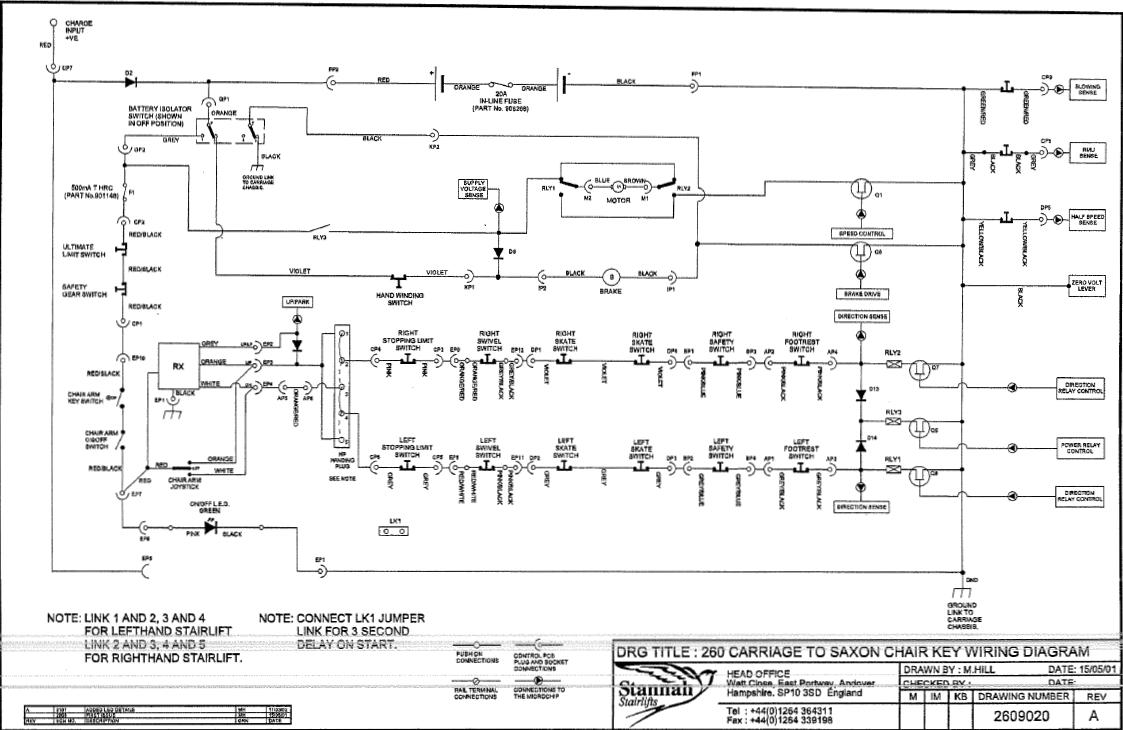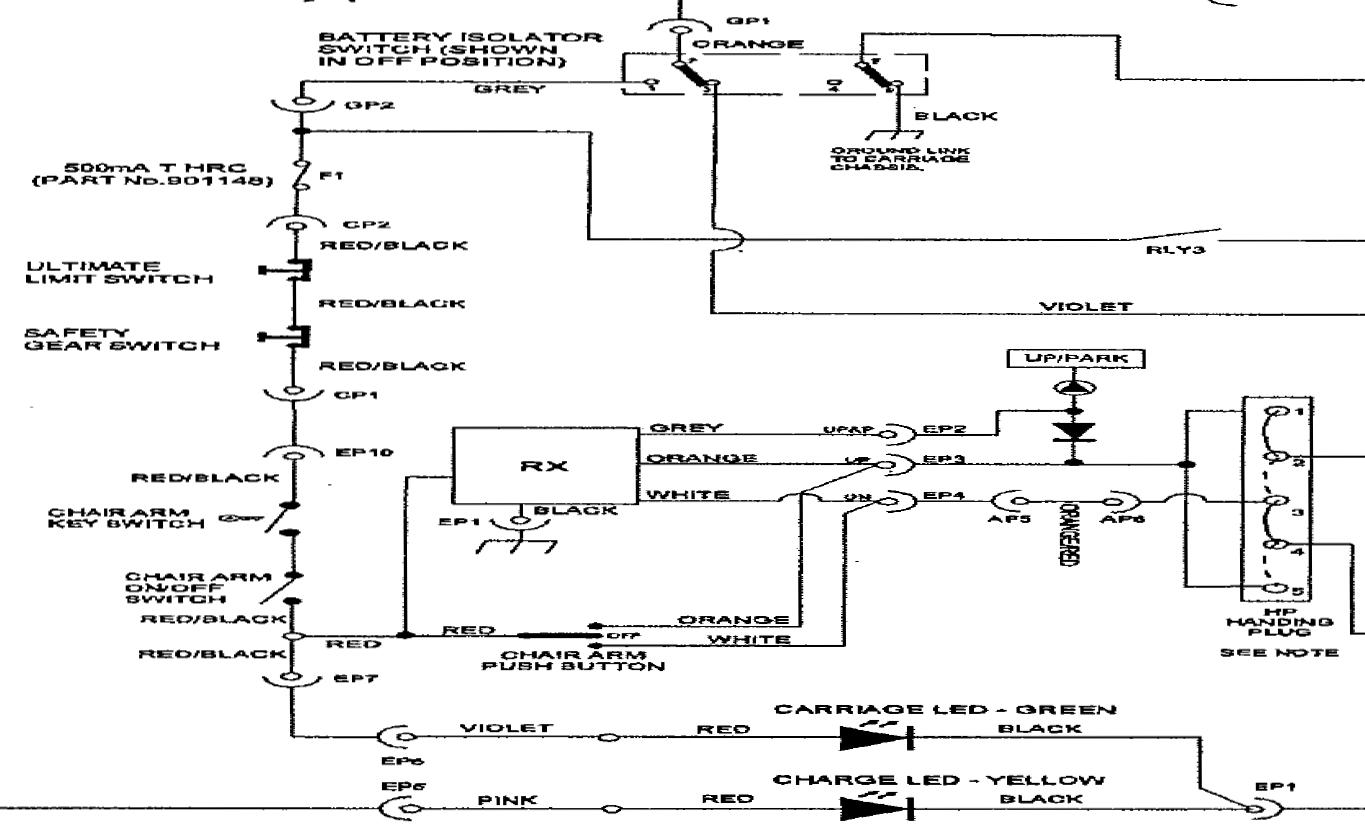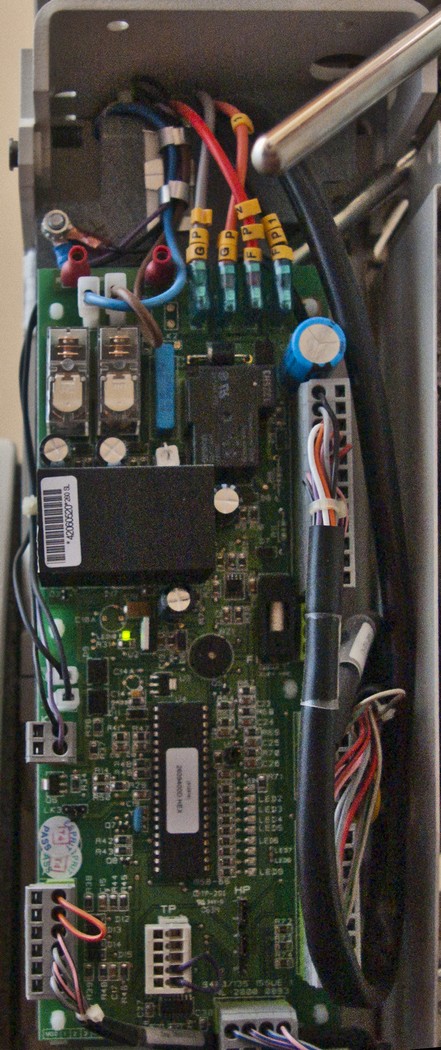- Joined
- 27 Jan 2008
- Messages
- 23,666
- Reaction score
- 2,666
- Location
- Llanfair Caereinion, Nr Welshpool
- Country

My mother hardly uses the stenner stair lift so no idea when the fault happened. I came to change a toilet and thought easy way to take the old loo down stairs was on the stair lift. It actually went about on meter before stopping.
First thought was maybe not been on the charging station so wound it back to station. Week latter still not working so time to look further.
Removing front cover I found the replacement batteries fitted at last service had smaller spade connectors than original and the so called engineer had pushed on the connector with the spade between the insulator and connector rather than the correct metal gripping part.
Quick bending with pliers and now good connection to battery. But still stair lift not working. Tested voltage on battery 27.4 volts power off and 27.6 volts power on and disconnect and getting 29.6 volt so clearly now charging.
Wound the chair off station and tried all safety switches wound back onto station removed power unplugged battery re-connected battery and switched on power and at last it worked.
I ran the chair about one meter from the charge station twice and back again and all seemed to work but decided to leave on charge before further tests if you have ever tried to manually wind the chair you would realise why I don't want it to fail.
It seems likely it was simply a bad connection on the battery but rather worried easy enough to carry the loo down stairs but to carry my mother would mean calling fire and rescue service.
Clearly I will once given time to charge re-test the chair for the whole run but rather worried about it failing without first any warning lights. The green all well light went out but yellow power light was on it would seem the fault latched some relay to stop the chair being used which is totally unacceptable except at the charging stations.
From what I can see there are safety panels and if the chair hits something it stops the chair I wonder if one of these panels was the real cause for failure but it seems there is no warning light to show when a panel is hit or any instructions on how to re-set.
Has anyone worked with these chairs if so can they shed any light on how they work? Before looking at the chair I thought it was mains operated but it seems all the mains does is charge the batteries it is the batteries which run the chair. Two sealed lead acid mounted on their end which also surprised me.
Mother is an amputee so without chair upstairs is out of the question. There is not the slightest hope if the lift fails that she could return to ground floor.
First thought was maybe not been on the charging station so wound it back to station. Week latter still not working so time to look further.
Removing front cover I found the replacement batteries fitted at last service had smaller spade connectors than original and the so called engineer had pushed on the connector with the spade between the insulator and connector rather than the correct metal gripping part.
Quick bending with pliers and now good connection to battery. But still stair lift not working. Tested voltage on battery 27.4 volts power off and 27.6 volts power on and disconnect and getting 29.6 volt so clearly now charging.
Wound the chair off station and tried all safety switches wound back onto station removed power unplugged battery re-connected battery and switched on power and at last it worked.
I ran the chair about one meter from the charge station twice and back again and all seemed to work but decided to leave on charge before further tests if you have ever tried to manually wind the chair you would realise why I don't want it to fail.
It seems likely it was simply a bad connection on the battery but rather worried easy enough to carry the loo down stairs but to carry my mother would mean calling fire and rescue service.
Clearly I will once given time to charge re-test the chair for the whole run but rather worried about it failing without first any warning lights. The green all well light went out but yellow power light was on it would seem the fault latched some relay to stop the chair being used which is totally unacceptable except at the charging stations.
From what I can see there are safety panels and if the chair hits something it stops the chair I wonder if one of these panels was the real cause for failure but it seems there is no warning light to show when a panel is hit or any instructions on how to re-set.
Has anyone worked with these chairs if so can they shed any light on how they work? Before looking at the chair I thought it was mains operated but it seems all the mains does is charge the batteries it is the batteries which run the chair. Two sealed lead acid mounted on their end which also surprised me.
Mother is an amputee so without chair upstairs is out of the question. There is not the slightest hope if the lift fails that she could return to ground floor.




